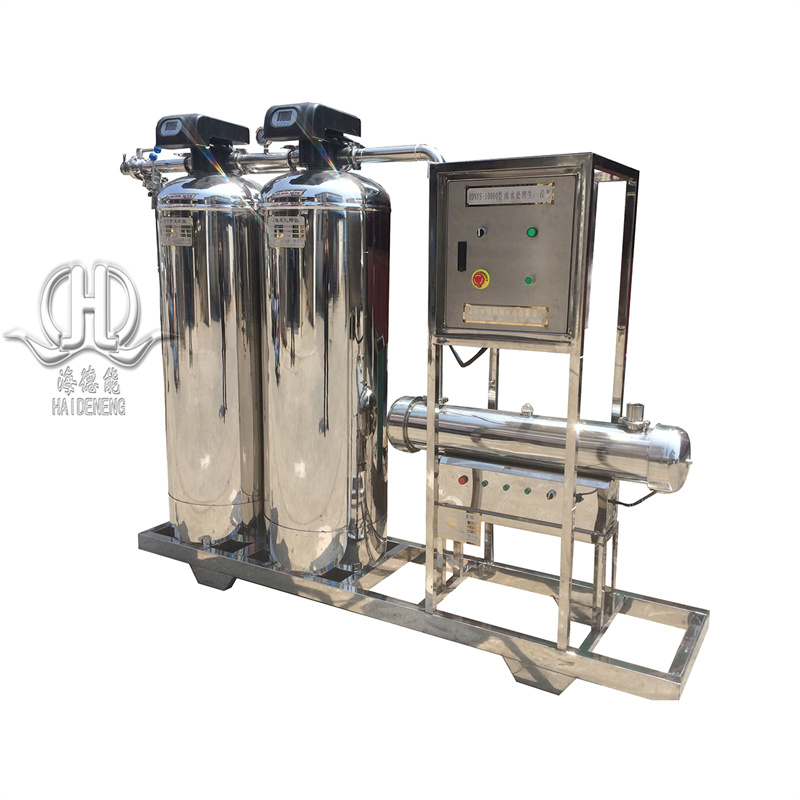Rainwater Treatment Fully Automatic Water Purification Equipment
Product description
1. System Composition
- Rainwater Collection System
- Rain gutters and downspouts are used to collect rainwater from rooftops. These components are usually made of materials such as stainless steel, PVC, or aluminum to ensure durability and prevent contamination of the rainwater.
- A pre-filter or debris catcher may be installed at the entrance of the collection system to remove large debris like leaves, twigs, and bird droppings.
- Sedimentation Tank
- After collection, the rainwater enters a sedimentation tank. In this tank, heavier particles such as sand and silt settle to the bottom due to gravity. The tank may have a conical bottom to facilitate the removal of settled sediments, which can be periodically drained.
- Filtration System
- Multimedia Filter: This filter typically contains layers of different materials such as quartz sand, activated carbon, and garnet. Quartz sand removes larger suspended particles, while activated carbon adsorbs organic matter, odors, and some dissolved contaminants. Garnet is often used as a finer filter layer to further remove smaller particles.
- Ultrafiltration (UF) Membrane Module: UF membranes with a pore size in the range of 0.01 – 0.1 microns can remove bacteria, viruses, colloids, and macromolecular organic matter from the rainwater. The membrane filtration process is driven by pressure, and the filtered water passes through the membrane while the contaminants are retained.
- Reverse Osmosis (RO) Membrane (Optional): For applications requiring very high water purity, such as drinking water or industrial processes, an RO membrane can be installed. RO membranes can remove dissolved salts, heavy metals, and most organic compounds, producing water of extremely high purity.
- Disinfection Unit
- Ultraviolet (UV) Disinfection: UV lamps emit ultraviolet light that destroys the DNA or RNA of microorganisms, rendering them unable to reproduce and effectively disinfecting the water. UV disinfection is a chemical-free method and does not add any residual substances to the water.
- Chlorination (Optional): In some cases, a small amount of chlorine may be added to the water to provide a residual disinfectant effect. This helps to prevent the growth of bacteria during storage and distribution of the treated water.
- Automatic Control System
- The system is equipped with sensors such as pressure sensors, flow sensors, and turbidity sensors. These sensors monitor the operation of the equipment in real-time.
- A programmable logic controller (PLC) or a microcontroller is used to control the operation of pumps, valves, and other components. For example, it can automatically start and stop the pumps based on the water level in the tanks, initiate backwashing of the filters when the pressure drop across them exceeds a certain value, and control the disinfection process.
2. Working Principle
- Rainwater is first collected from the rooftops and passes through the pre-filter to remove large debris. Then, it enters the sedimentation tank where the heavier particles settle.
- The partially clarified water then flows through the multimedia filter, where further filtration occurs to remove smaller particles and some organic matter.
- Next, the water enters the ultrafiltration membrane module (and optionally the reverse osmosis membrane module), which removes bacteria, viruses, and other contaminants based on the membrane’s pore size.
- Finally, the disinfection unit treats the water to ensure it is free from harmful microorganisms, and the treated water is stored in a clean water tank for use.
3. Advantages
- Sustainable Water Source: Rainwater is a renewable resource. By treating and using rainwater, it helps to reduce the demand for municipal water supplies, especially in areas with water shortages.
- Cost-Effective: Once the initial investment in the equipment is made, the cost of collecting and treating rainwater is relatively low compared to purchasing water from external sources.
- Automatic Operation: The fully automatic nature of the equipment reduces the need for constant manual supervision, making it convenient for various applications such as residential, commercial, and industrial use.
4. Applications
- Residential Use: For household water supply for non-potable uses such as flushing toilets, watering gardens, and car washing. In some cases, with proper treatment and disinfection, it can also be used for potable water.
- Commercial Buildings: Can be used for cooling tower make-up water, toilet flushing, and landscape irrigation in commercial and office buildings, reducing the overall water consumption of the building.
- Industrial Processes: In industries where water quality requirements are not extremely high, such as in some manufacturing processes or cooling systems, treated rainwater can be used as a substitute for freshwater.
Write your message here and send it to us











